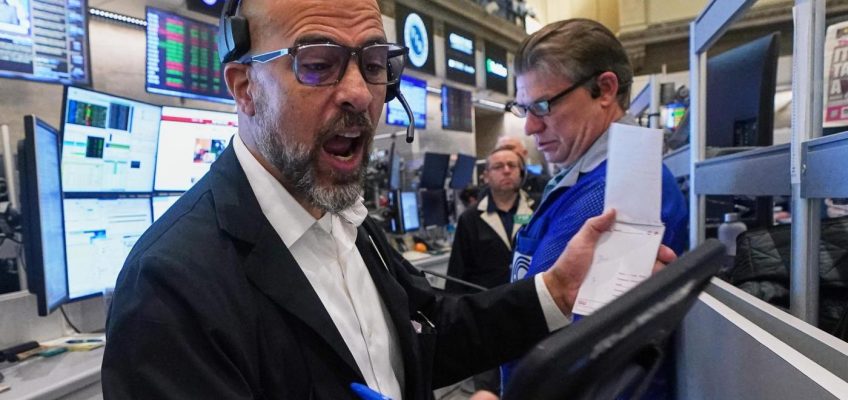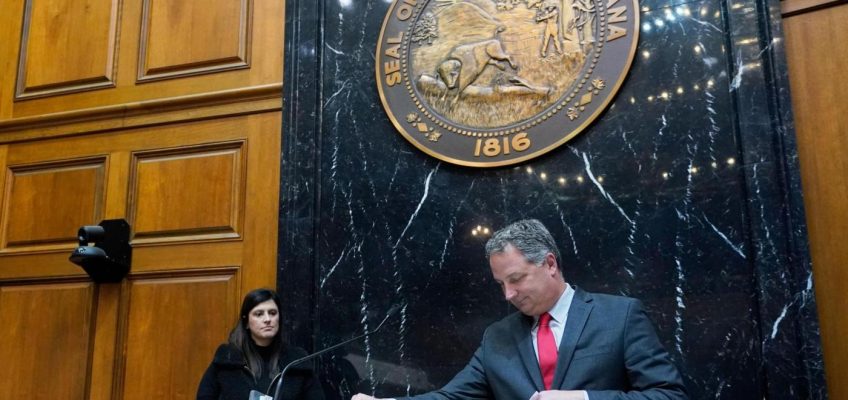By STAN CHOE, Associated Press Business Writer
NEW YORK (AP) — U.S. stocks are giving back some of last week’s rally on Monday, as bitcoin, Nvidia and other former stars of Wall Street fall again.
Related Articles
Why Cyber Monday could break spending records despite economic uncertainty
Airbus says most A320 jets now have software fix, with less than 100 planes still needing update
Faux jewels and slimming belts: why shopping on TikTok is a lot like QVC
Business People: Moorhead correspondent Dan Gunderson to retire from MPR
Hidden gems to discover this Cyber Week
The S&P 500 slipped 0.6% and was on track to break a five-day winning streak. The Dow Jones Industrial Average was down 267 points, or 0.6%, as of 9:35 a.m. Eastern time, and the Nasdaq composite was 0.8% lower.
Last week’s rally was largely due to strengthening hopes that the Federal Reserve will cut its main interest rate at its meeting next week to help shore up the slowing job market. Such hopes are still high, with traders betting on a roughly 87% chance of it, according to data from CME Group.
But yields for longer-term Treasurys nevertheless rose in the bond market on Monday. It was part of a worldwide climb for bond yields after the head of the Bank of Japan hinted at a possible hike to interest rates there.
When bonds are paying higher yields, they can attract investors who would otherwise buy stocks, cryptocurrencies or other investments. Higher bond yields can undercut prices for all kinds of investments, and they particularly hurt those seen as the most expensive.
Bitcoin, which was soaring around $125,000 in October, dropped below $86,000. That’s down roughly 5% from a day earlier.
That sent stocks lower across the crypto industry. Coinbase Global sank 4.8%, and Robinhood Markets fell 4.5%, for example. Strategy, the company that used to be known as MicroStrategy and now raises money just to buy bitcoin, dropped 6.9%.
Other former high flyers on Wall Street also struggled, including stocks caught up in the frenzy around artificial-intelligence technology.
Nvidia, which has grown to become Wall Street’s most influential stocks, slipped 0.6% and was one of the heaviest weights on the market. Palantir Technologies fell 2.3%, and Super Micro Computer sank 3%.
The market seemed to get relatively little solace from an apparently strong start to the holiday shopping season. Consumer spending during the Black Friday and Cyber Monday retailing bonanza was expected to exceed expectations, despite uncertainty over the outlook for the U.S. economy.
Among the few winners on Wall Street was Synposys, which rose 4.6%. It said Nvidia is investing $2 billion in its stock as part of an expanded partnership between the two.
In stock markets abroad, indexes were mixed amid some sharp moves.
France’s CAC 40 fell 0.5%, dragged down in part by a 5.1% loss for Airbus. The European aerospace giant said Monday that most of its fleet of 6,000 A320 passenger jets have received an update after a weekend software glitch that could have affected flight controls. Travelers faced minor disruptions heading into the weekend as airlines around the world scrambled to push the software updates out after Airbus warned of the problem Friday, one of the busiest travel days of the year.
In Japan, the Nikkei 225 tumbled 1.9% on worries about the possibility of higher interest rates. Japan’s benchmark interest rate has remained near zero for years in hopes of juicing the economy. Now inflation is holding above the Bank of Japan’s target of about 2%.
In the bond market, the yield on the 10-year Treasury rose to 4.08% from 4.02% Friday.
AP Business Writer Elaine Kurtenbach contributed.




